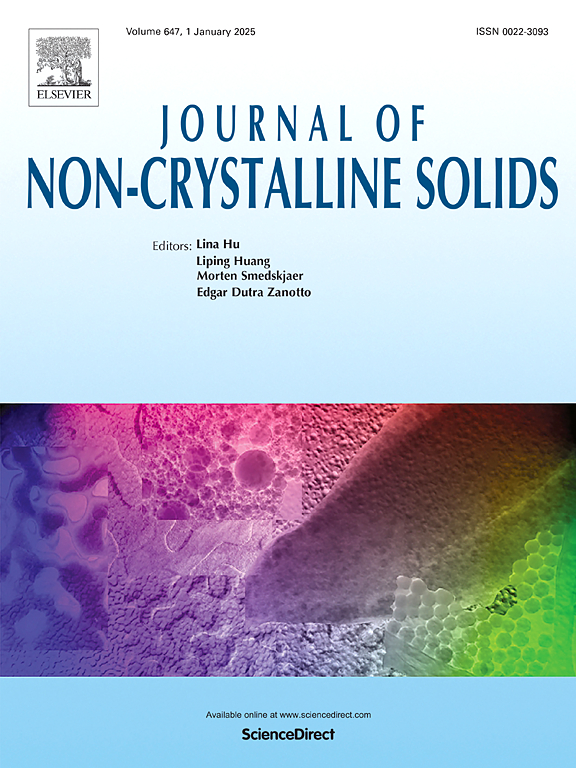分子动力学模拟和机器学习预测Cu/Zr多层纳米膜在拉伸压缩下的力学行为
IF 3.2
3区 材料科学
Q1 MATERIALS SCIENCE, CERAMICS
引用次数: 0
摘要
本研究利用分子动力学模拟研究了Cu/Zr多层纳米膜在拉伸和压缩变形下的力学响应。结果表明,在拉伸过程中滑移行为只发生在Cu薄膜中,而在压缩过程中相变只发生在Zr薄膜中。此外,本研究还探讨了温度、层厚度和应变速率对纳米膜内位错演化的影响。该研究表明,Cu/Zr纳米膜中的晶格无序通过抑制位错的反向运动来减轻外部条件的影响。温度和应变速率对材料的力学性能有显著影响,而层数对材料的力学性能影响较小。因此,温度和应变速率主要影响Cu/Zr纳米膜的塑性变形。此外,研究还阐明了温度、应变速率和层构型对晶格无序的影响。这些发现为Cu/Zr在原子尺度上的力学特性和变形机制提供了新的见解。本文章由计算机程序翻译,如有差异,请以英文原文为准。
Molecular dynamics simulation and machine learning to predict mechanical behavior of Cu/Zr multilayer nanofilms under tension-compression
This study utilizes molecular dynamics simulations to examine the mechanical response of Cu/Zr multilayer nanofilms under tension and compression deformation with the assistance of machine learning. The results demonstrate slip behavior during the tensile process, occurring exclusively in the Cu film, and phase transformation during the compression process, occurring solely in the Zr film. Additionally, this study investigates the effects of temperature, layer thickness, and strain rate on dislocation evolution within nanofilms. This study reveals that lattice disorder in Cu/Zr nanofilms mitigates the impact of external conditions by inhibiting the reverse movement of dislocations. Temperature and strain rate significantly affect the mechanical behavior, while the number of layers is negligible. Therefore, temperature and strain rate primarily influence plastic deformation in Cu/Zr nanofilms. Additionally, the research elucidates how temperature, strain rates, and layer configuration contribute to lattice disorder. These findings offer novel insights into the mechanical characteristics and deformation mechanisms of Cu/Zr at the atomic scale.
求助全文
通过发布文献求助,成功后即可免费获取论文全文。
去求助
来源期刊

Journal of Non-crystalline Solids
工程技术-材料科学:硅酸盐
CiteScore
6.50
自引率
11.40%
发文量
576
审稿时长
35 days
期刊介绍:
The Journal of Non-Crystalline Solids publishes review articles, research papers, and Letters to the Editor on amorphous and glassy materials, including inorganic, organic, polymeric, hybrid and metallic systems. Papers on partially glassy materials, such as glass-ceramics and glass-matrix composites, and papers involving the liquid state are also included in so far as the properties of the liquid are relevant for the formation of the solid.
In all cases the papers must demonstrate both novelty and importance to the field, by way of significant advances in understanding or application of non-crystalline solids; in the case of Letters, a compelling case must also be made for expedited handling.
 求助内容:
求助内容: 应助结果提醒方式:
应助结果提醒方式:


